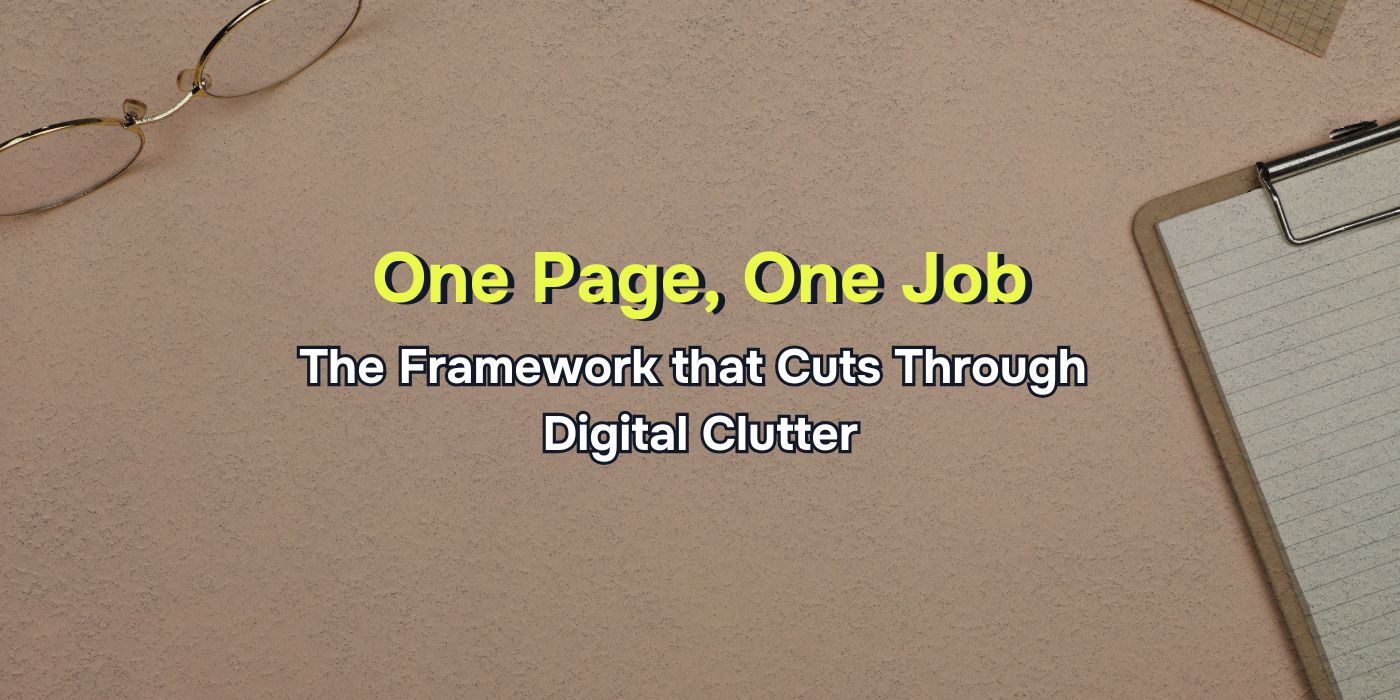Key Takeaways
- Your homepage headline should say exactly what you do and where you do it — no cleverness, just clarity. AI (and your visitors) need a literal answer to “What is this, and is it for me?” within seconds of landing.
- Structure matters more than ever. Use clear H1–H3 headings, logical section flow, and schema markup to help AI interpret your site correctly — and rank it accordingly.
- Repetition builds trust — for machines and people. Mention your services, location, and audience naturally and often. Don’t assume once is enough.
- Plain language and specific CTAs win every time. Ditch the fluff. Speak like your customer. Guide them to take action with direct, location- and service-based calls to action.
Because if Google’s AI can’t figure out what you do, no one else will either.
Most homepages are built for people. Some are built for designers. Very few are built for machines.
That’s a problem.
Because Google’s Search Generative Experience (SGE) and other AI-powered search tools don’t just rank your site anymore — they read it, summarize it, and sometimes answer the question without sending traffic your way. If your homepage content isn’t structured clearly enough for AI to understand and contextualize it, you’re invisible.
This isn’t about chasing trends. It’s about building websites that still work in a search ecosystem where humans aren’t the only audience.
Here’s how the pros are rethinking homepage structure — and what you should be doing now to keep up.
Start With a Clear, Literal Headline
The first thing your homepage should do is answer one question: What do you do and who is it for?
Not in a clever or abstract way — in a way that’s obvious to a human skimming it and to an AI model parsing it.
Bad: “Elevate What Matters.”
Good: “Affordable Lawn Care and Weed Control in Cumming, GA.”
This isn’t just better for SEO. It’s better communication. If someone lands on your site — or Google scrapes it for an AI summary — and they still don’t know what you actually do, you’ve already lost.
Make your H1 literal. Say what the business offers and where. Then support it with a short, human-friendly sentence that adds a benefit or differentiator.
Use Subheadings That Reflect Search Intent
AI (and users) scan your homepage for cues. And just like chapter titles in a book, your subheadings tell the story of what’s coming next.
Instead of vague headers like “Our Work” or “Why Us,” use language that mirrors what people are actually searching for:
- “Why Tampa Homeowners Trust Our Roof Repair Team”
- “What’s Included in Our Lawn Treatment Plans”
- “Top-Rated Cleaning Services for Orlando Homes”
These kinds of subheadings help AI understand your structure — and boost your chances of being cited directly in search results.
Organize Your Content Like a Story, Not a Brochure
Your homepage shouldn’t just list what you offer — it should guide the visitor (and the AI) through a logical journey.
Here’s a simple structure that works:
- Hero Section: Literal headline, benefit-driven subhead, clear CTA
- Services Overview: A short summary of what you offer
- Who It’s For: The industries, people, or areas you serve
- Why You’re Different: Real differentiators, not fluff
- Proof: Ratings, testimonials, reviews, recognitions
- Call to Action: Make the next step clear — and easy
Don’t overload each section. Keep paragraphs short, break up text with spacing, and use bolding or highlights for key points. Your goal is clarity, not cleverness.
Repeat Your Core Info — Clearly and Consistently
A lot of businesses make the mistake of saying something once and assuming it’s enough. It’s not.
AI is looking for repeated signals: What services do you offer? Where are you located? Who do you help?
Make sure those answers appear more than once — ideally in different ways. For example:
- “We offer expert HVAC repair and installation across Orlando.”
- “Our Orlando-based HVAC technicians are trained to handle everything from AC breakdowns to full system replacements.”
- “Book your HVAC service in Orlando today and get a same-day appointment.”
This kind of repetition reinforces your authority and helps search models accurately match your site to relevant user queries.
Use Strong, Specific Calls to Action
“Learn More” is lazy. “Get Started” is vague. If you want users — and AI — to understand what action to take next, your CTA needs to be specific and aligned with intent.
Try:
- “Request a Free Roofing Estimate in Tampa”
- “Book Lawn Service in Cumming Today”
- “Schedule a Pressure Washing Quote in Gainesville”
Place your CTA early (above the fold), again in the middle, and once more at the bottom. Make it obvious. Make it actionable.
Don’t Forget About Structure (The Stuff You Don’t See)
AI reads your homepage using the same logic that powers code and accessibility tools. That means your H1, H2, and H3 structure actually matters. So does your schema.
Use proper heading hierarchy:
- H1 = The main page title (use once)
- H2 = Main sections like services, about, benefits
- H3 = Sub-points within those sections
And add structured data (schema markup) wherever possible. For most service-based businesses, that includes:
- LocalBusiness schema
- Service schema
- FAQPage schema
This is like giving AI a cheat sheet. It improves visibility, strengthens your content’s eligibility for featured results, and helps Google “get” your site faster.
Expert Tips: What High-Performing Sites Are Doing Right
Want to stay ahead of the curve? Here’s what the best marketing-led businesses are already doing:
- Treat your homepage like your best-performing landing page.
Every section is purposeful. Every word is doing a job. Your homepage shouldn’t just look good — it should convert. - Use real words your customer would actually type into Google.
That means “leaky roof repair in Tampa” — not “integrated weatherproofing solutions.” Plain language = better search performance. - Lead with proof early and often.
Social proof isn’t a nice-to-have — it’s what builds trust in seconds. Add review counts, star ratings, logos of clients, or trust badges high on the page. - Highlight your differentiators with clarity, not cliché.
Don’t say you’re “committed to excellence.” Say you have “Over 700 five-star reviews on Google” or “A 98% same-day service rate.” Specifics sell. - Think of AI as your second audience — and write accordingly.
Structure, keywords, clarity, and repetition help machines understand your message — and help people take action faster. That’s a win-win.
Final Thought
Your homepage isn’t just a first impression — it’s your search visibility, conversion engine, and AI-readable sales pitch all rolled into one.
If it’s overloaded with jargon, lacking clear structure, or trying too hard to be clever, it’s not working as hard as it should. Not for your visitors. Not for search. And definitely not for AI.
Great marketers know the goal isn’t to say more. It’s to say the right things — in the right places — to the right audiences.
Machines included.
FAQs
How does Google’s AI actually “read” a homepage?
It scans your content structure (headings, paragraphs, links), pulls patterns from repeated keywords, and uses schema markup to identify your services, location, and relevance to user queries.
Do I really need to repeat my service and location multiple times?
Yes — within reason. Repetition helps AI confidently associate your business with specific queries. Just make sure it sounds natural and helpful, not robotic.
What if my homepage is already well-designed but underperforming?
Design is only half the battle. Revisit the content structure, language clarity, and SEO signals. A beautiful homepage that doesn’t clearly explain what you do won’t perform — for users or AI.






